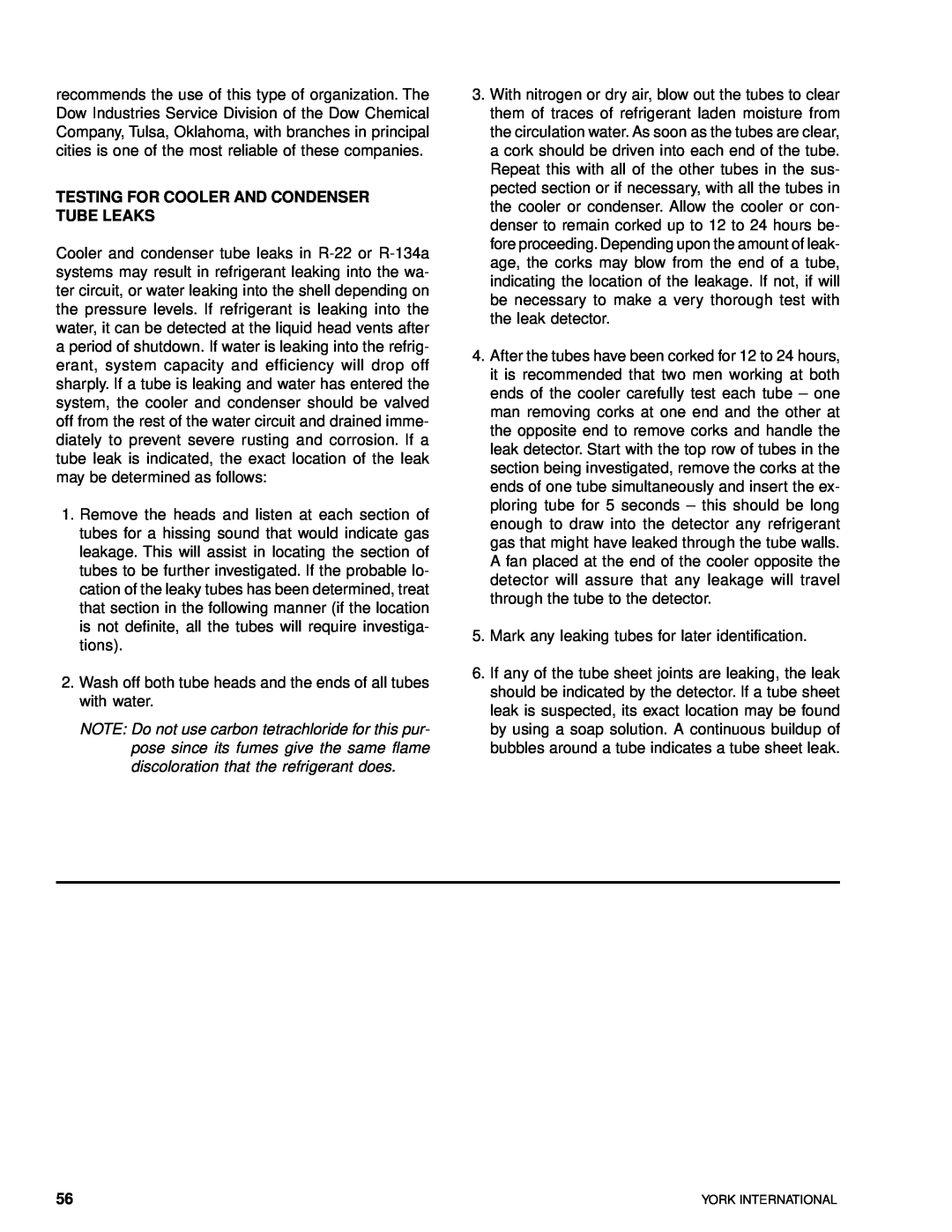recommends the use of this type of organization. The Dow Industries Service Division of the Dow Chemical Company, Tulsa, Oklahoma, with branches in principal cities is one of the most reliable of these companies.
TESTING FOR COOLER AND CONDENSER TUBE LEAKS
Cooler and condenser tube leaks in
1.Remove the heads and listen at each section of tubes for a hissing sound that would indicate gas leakage. This will assist in locating the section of tubes to be further investigated. If the probable lo- cation of the leaky tubes has been determined, treat that section in the following manner (if the location is not definite, all the tubes will require investiga- tions).
2.Wash off both tube heads and the ends of all tubes with water.
NOTE: Do not use carbon tetrachloride for this pur- pose since its fumes give the same flame discoloration that the refrigerant does.
3.With nitrogen or dry air, blow out the tubes to clear them of traces of refrigerant laden moisture from the circulation water. As soon as the tubes are clear, a cork should be driven into each end of the tube. Repeat this with all of the other tubes in the sus- pected section or if necessary, with all the tubes in the cooler or condenser. Allow the cooler or con- denser to remain corked up to 12 to 24 hours be- fore proceeding. Depending upon the amount of leak- age, the corks may blow from the end of a tube, indicating the location of the leakage. If not, if will be necessary to make a very thorough test with the leak detector.
4.After the tubes have been corked for 12 to 24 hours, it is recommended that two men working at both ends of the cooler carefully test each tube – one man removing corks at one end and the other at the opposite end to remove corks and handle the leak detector. Start with the top row of tubes in the section being investigated, remove the corks at the ends of one tube simultaneously and insert the ex- ploring tube for 5 seconds – this should be long enough to draw into the detector any refrigerant gas that might have leaked through the tube walls. A fan placed at the end of the cooler opposite the detector will assure that any leakage will travel through the tube to the detector.
5.Mark any leaking tubes for later identification.
6.If any of the tube sheet joints are leaking, the leak should be indicated by the detector. If a tube sheet leak is suspected, its exact location may be found by using a soap solution. A continuous buildup of bubbles around a tube indicates a tube sheet leak.
56 | YORK INTERNATIONAL |
